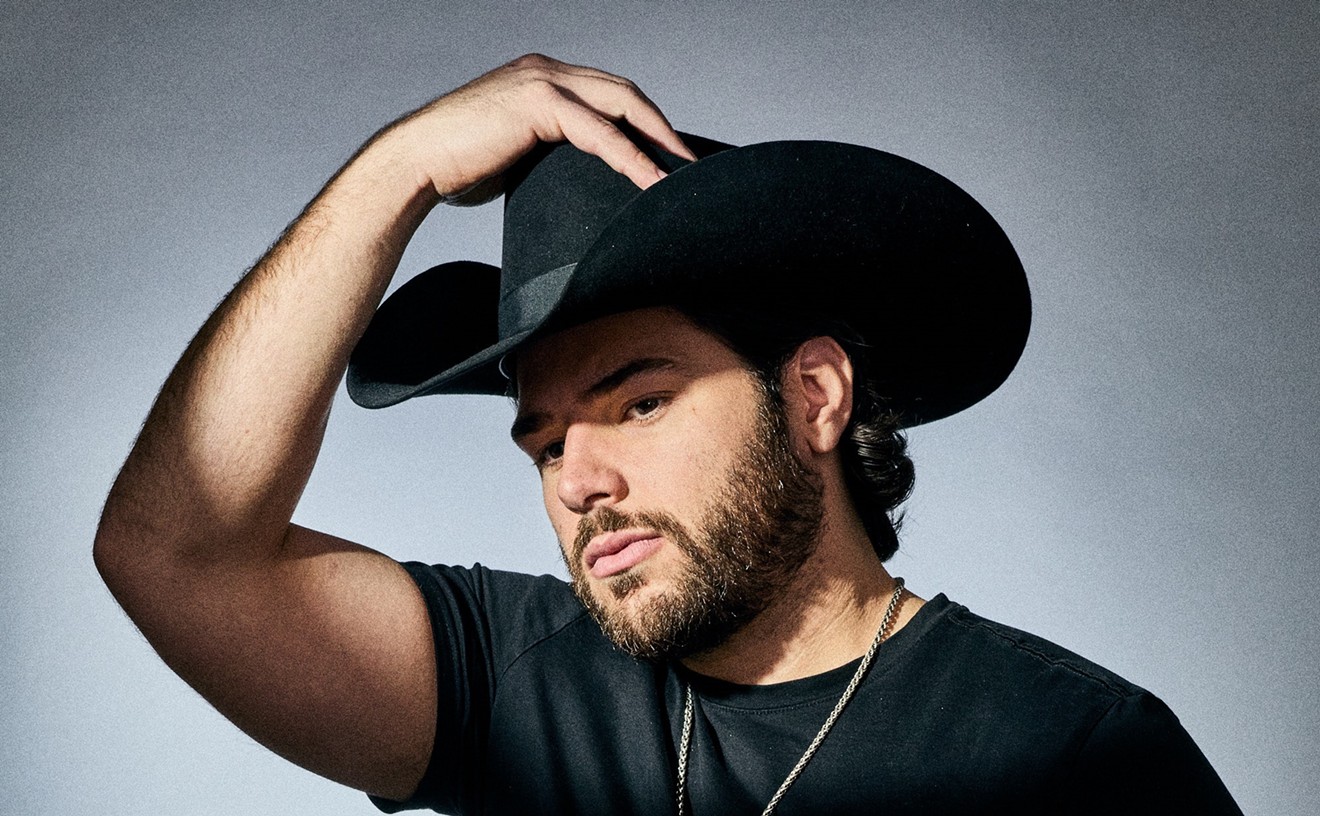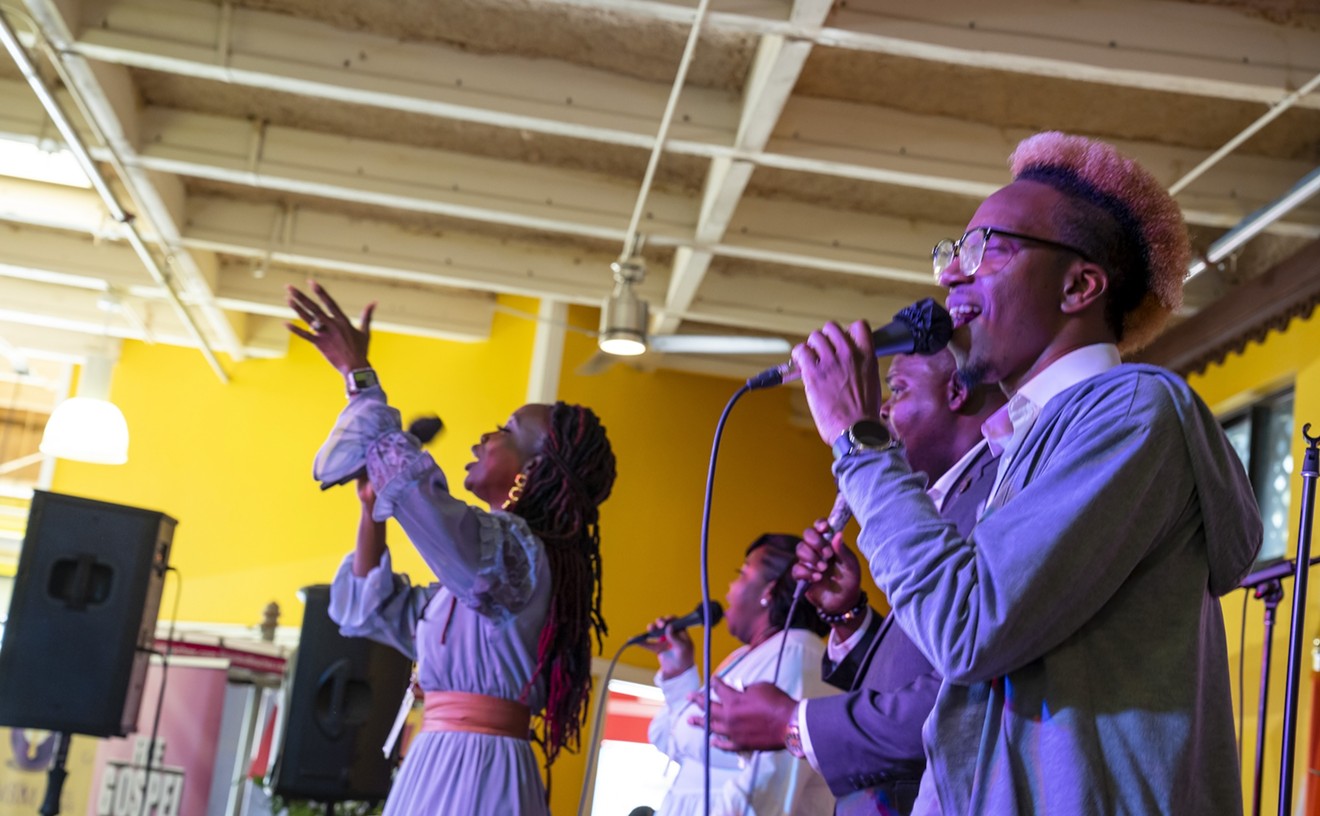Glitter
(Panacea)
Most bands, even the great ones, have about three songs on which all their tunes are modeled. Just listen to the entire Nirvana catalogue. Some bands work with even less: The Ramones have two songs -- a fast one, and a faster one. During the course of an Al's Not Well set -- or, for that matter, on the band's debut CD Glitter -- you might find yourself wondering if you didn't just hear the same song a few minutes earlier. Certain heavy percussive lines, swirling guitar riffs, and clever vocal harmonies are motifs. There seem to be a couple of songs with interchangeable parts that they can mix and match, reverse, slow down, and speed up. But they're a good couple of songs: Check out "Dearest Friend," "Bliss," "Chemical Imbalance," and "So Blue."
-- Georgina Cardenas
Teena Marie
Lovergirl: The Teena Marie Story
(Epic/Legacy)
Teena Marie is a woman who writes, arranges, and produces her own material; a woman who, like her idol Marvin Gaye, contributes soulful playing on all instruments except horns and strings (which she often arranges). Her genius is brilliantly illuminated on "Shadow Boxing," the 1983 album track that divides this collection in two.
Start with the concept of shadowboxing. "In the dark." But in the dark there are no shadows. So Teena Marie prods the listener's imagination from every angle until you know just how she felt on that fevered night, a night of raw sex and pure love, a time so special she must struggle to communicate the depth of her feelings ("Do I have to break it down? I need to break it down; I love you, I love you, I love you"). Her singing slides from a whisper to a scream and back again as acoustic guitar and strings eventually give way to a harshly beautiful electric guitar solo. Toward the end she breaks it all down again in Portuguese, answers herself in English, and seems ready to talk in tongues at the fade.
The end result is a stinging rebuke to everyone who separates sex and love, as Teena Marie gives you the details ("I'm coming, I'm going, I'm swimming, I'm flowing") without the slightest self-consciousness, without even the hint of a leer. Is she singing to herself, to her lover, or face-to-face to you? The answer seems to be all three, as she pulls you into the whirl of a musical menage a trois where you feel everything intensely but all you can see are shadows in the dark.
-- Lee Ballinger
Lefty Frizzell
Look What Thoughts Can Do: The Essential Lefty Frizzell
(Legacy)
Lefty Frizzell
That's The Way Love Goes: The Final Recordings of Lefty Frizzell
(Varese Vintage)
Daniel Cooper's fine Lefty Frizzell biography claims, right there in the title, that Lefty is country music's greatest singer. After listening to these two new Frizzell retrospectives, I can easily hear why someone might want to make such an argument. Lefty sang in an endearing, earnest style that could be flowery and plainspoken all at once. His sweet voice would dip down, then swoop up, sliding all around the ends of lines, and his flurries of fragile notes were occasionally reminiscent of quiet yodels. Over the years, his melismatic approach has become the stock-in-trade for a long line of great country singers -- you can hear Lefty in everyone from Merle Haggard and Willie Nelson to John Anderson and George Strait -- but when Lefty first applied it to his 1950 Dallas, Texas, recording of "I Love You a Thousand Ways," it set the woods on fire, so to speak. Certainly the post-Hank country world has not seen a more influential singer than Lefty Frizzell.
But arguing that ol' Lefty was country's "greatest" singer seems something of a stretch. Which is why, perhaps, Cooper's book -- The Honky Tonk Life of Country Music's Greatest Singer -- never actually tries to make the case; the title is just the fan in him talking. Surely Frizzell contemporaries such as Hank Williams, Webb Pierce, Ray Price, Ira Louvin, and George Jones were every bit as good, and numerous country singers since then (Patsy Cline, Conway Twitty, Haggard, even Strait) would be equally smart bets. To this fan's ears, Jones, who clearly fashioned his own note-twisting style with liberal touches of Lefty in mind, simply does a better job with that singer's innovations than Frizzell, who infrequently pushed the approach into gimmickry.
Look What Thoughts Can Do does a good job of making Lefty's case. It also makes clear, however, the argument's weaknesses. The two-disc set covers Frizzell's career from 1950 to 1964, but 23 of the 34 singles here were recorded between 1950 and 1954, and more than half of those were recorded in the first two whirlwind years of his career -- when he was a serious chart challenger to Hank himself. That breakdown certainly puts the emphasis where it should be, but it also points out just how shallow the Frizzell catalogue really is. What there is of it, though, is often stunning. Listening to Lefty's delicate version of Jimmy Rodgers's "Travellin' Blues," his own exuberant "Shine, Shave, Shower," his eerie and now iconic "Long Black Veil," the weary fatalism of the title track, and more than several others here will persuade almost anyone to be a Frizzell fan.
Years of hard living and harder drinking, bad management and worse timing, culminated in Frizzell's too-early death in 1975. That's the Way Love Goes chronicles the best of the ABC recordings that would wind up being his last, and I'd argue that this period featured the most consistently perfect music he ever made, not to mention the best songs (with friend Whitey Shafer assisting) he ever wrote. His voice here is deeper, and he resorts to his patented note swirling much less often, rendering the technique all the more effective. On the gorgeous Frizzell-Shafer title track, he sounds as lucky and grateful as any singer, ever. And while the jaunty honky-tonk piano on the original "I Love You a Thousand Ways" twenty years earlier always seemed to be fighting Lefty's words, this 1972 version, recorded at his next-to-last session, sounds both as hopeful and afraid as I always thought it should. Like everything on That's the Way Love Goes, it's just beautiful. No arguments allowed.
-- David Cantwell
Illyah Kuryahkin
Count No Count
(Arena Rock)
Alternately dense and claustrophobic, noisy and imminently catchy, the music issued by Dean Wilson under the pseudonym Illyah Kuryahkin both defies and obliterates the possibilities of the four-track recorder. Simply put, he turns the damn machine inside out. Count No Count, Wilson's epic debut disc, balances the neo-psychedelia of the Apples in Stereo with the swinging kitchen-sink clutter of Neutral Milk Hotel. But unlike those home-taping outfits, Wilson is less concerned with words than sounds. Lyrics are mostly undecipherable (although the crib sheet helps reveal the extent of Wilson's broken heart), and is delivered in a creepy but charmingly innocent whisper. His blissful pop melodies are submerged in layers of tape hiss, found sounds, fuzz, and catch-all percussion (from cheapo drum machines to bottles tapped with chopsticks to what may or may not be cardboard boxes).
Great as it is, there's not much on this sprawling but focused opus that grabs you quite as firmly as last year's breathless, pulsating "Takin' a Train" (available from Arena Rock on a split single with Guided by Voices guitarslinger Mitch Mitchell). Nevertheless, with Count No Count Wilson has found a new place to dwell amid the underbelly of trippy lo-fi rock. You'd be wise to join him. (Arena Rock, Box 632 Village Station, New York, NY 10014)
-- John Floyd
Various Artists
Pulp Classix
(Angel)
In its latest attempt to grab the attention of musically subliterate twentysomethings, Angel Records has married a classical CD to a nine-page crime novella in the style of Mickey Spillane by way of Quentin Tarantino. This is Volume 1, clumsily titled The Death of the Look of Hope. (Will Volume 2 be The Look of the Hope of Death?) Each of the nine brief chapters is associated with a musical selection on the CD. For example, the obligatory scene in the tacky Trocadero club ("Dancing girls, dancing boys, drums, bugle beads, and monkey fur") is to be read to the accompaniment of George Gershwin's Cuban Overture, and the sultry love scene between the gumshoe and the good-girl-gone-bad goes with the purple passion of the "Adagio" from Rachmaninoff's Symphony no. 2.
I don't associate detective stories with classical music -- I hear wailing sax and cocktail piano instead. Still, the Paul Taylor Dance Company once reset Stravinsky's seminal The Rite of Spring as a murder mystery in Chinatown, so perhaps Pulp Classix isn't such a weird idea after all. (At least no weirder than the idea that Tarantino is a great director.) The music, of course, is excellent: four selections by Prokofiev, two by Gershwin, and one each by Puccini, Rachmaninoff, and Britten. Note, however, that with the exception of the Cuban Overture, these are excerpts from larger works -- just right for moviegoers and dime novel readers with short attention spans. The performances are from previously issued recordings from the label's back catalogue, and are effective, for the most part ... as if it mattered.
-- Raymond Tuttle










